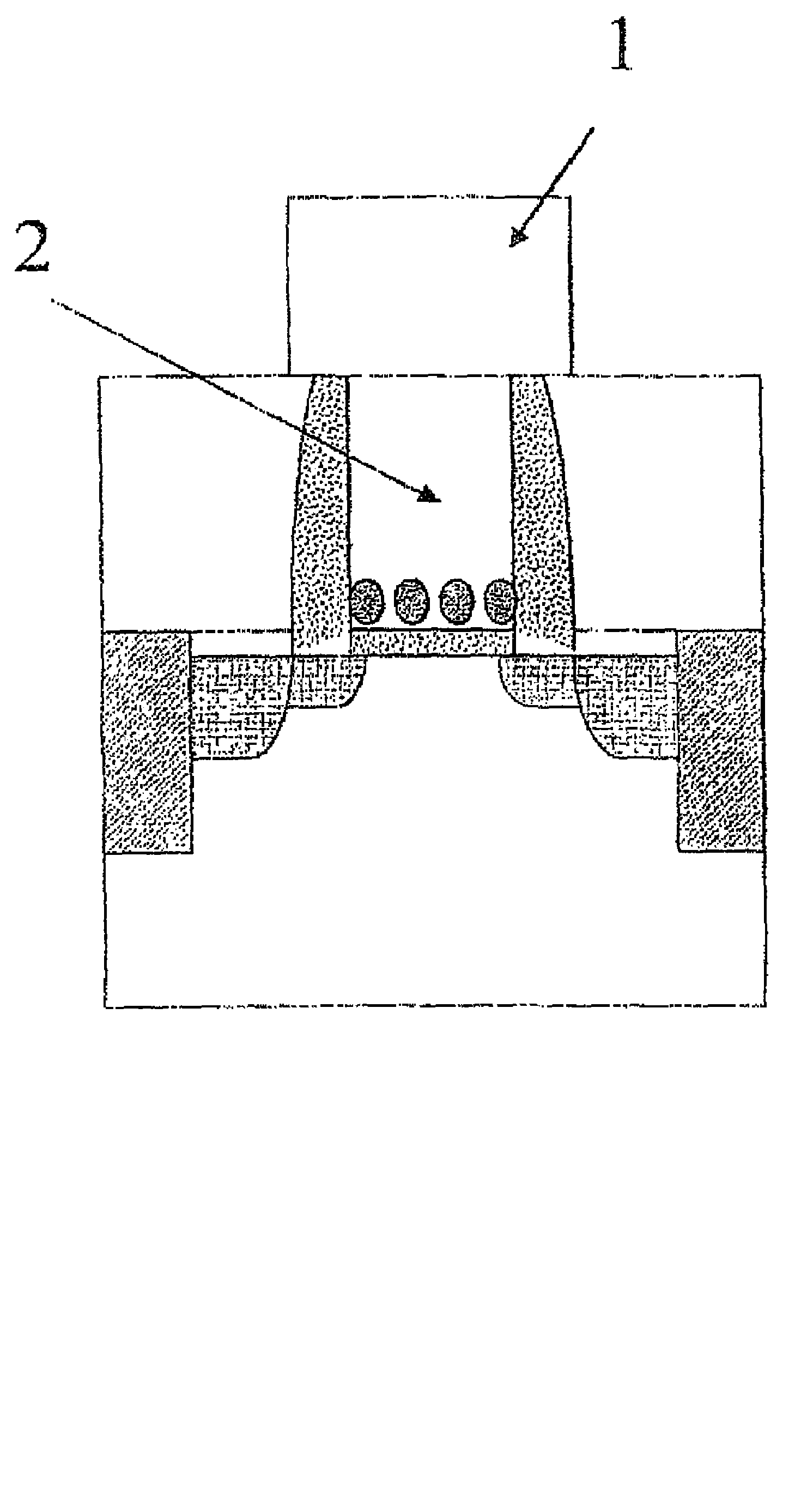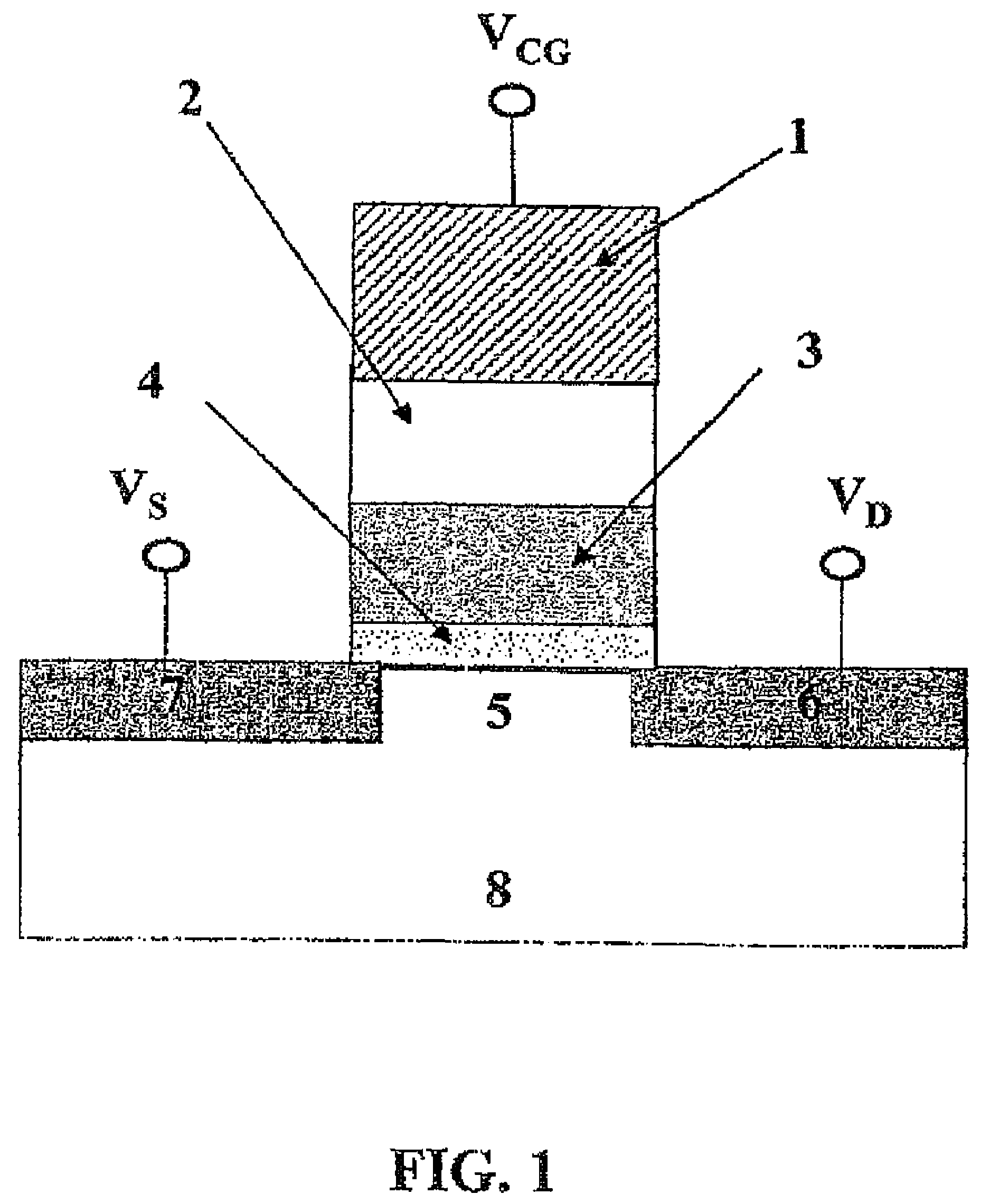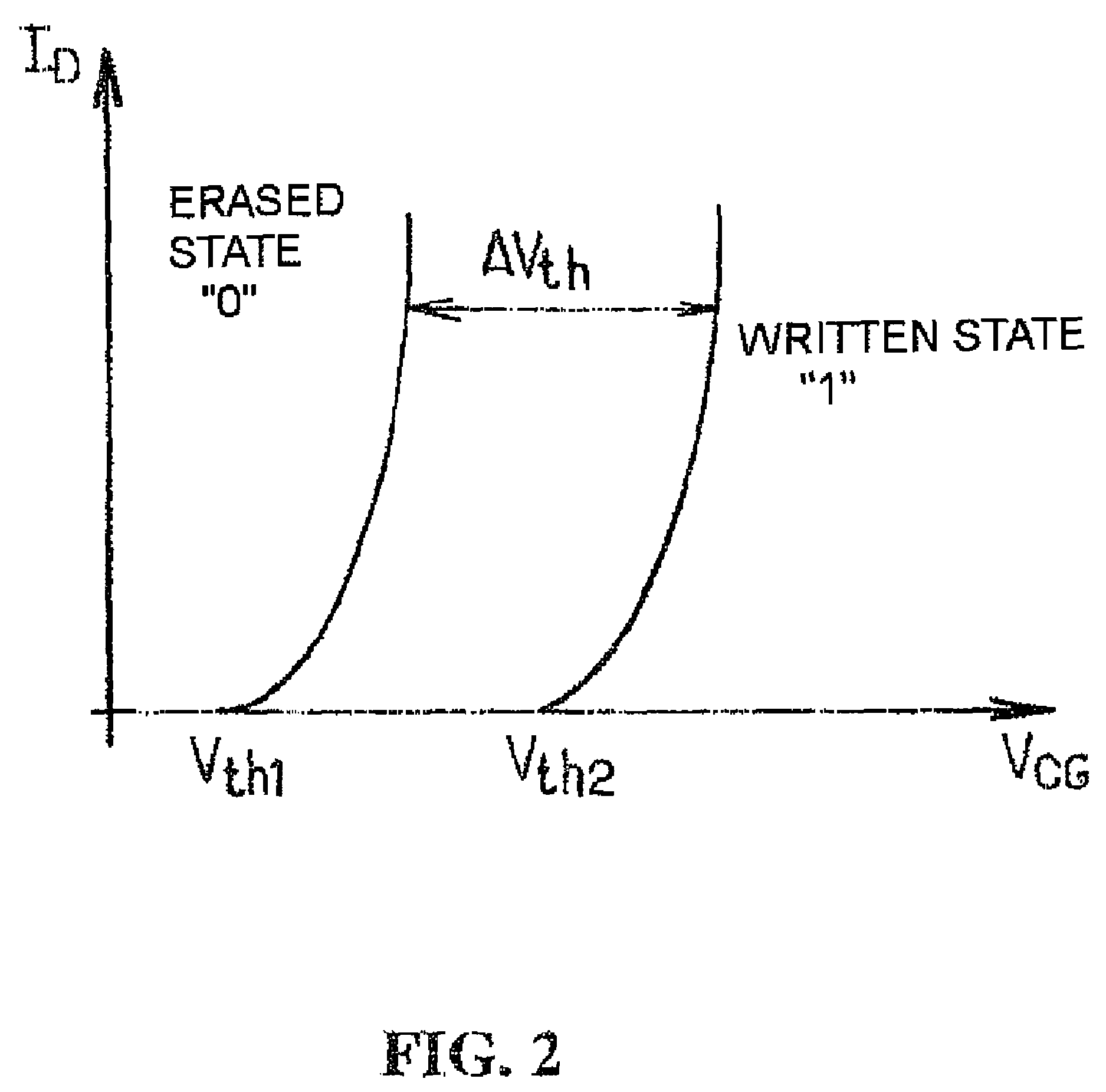Polyoxometallates in memory devices
a technology of polyxometallates and memory devices, applied in semiconductor devices, digital storage, instruments, etc., can solve the problems of saturation of erasing characteristics, large leakage currents, and many technological obstacles, and achieve the effect of improving the situation and advantageous use of multi-bit storage devices
- Summary
- Abstract
- Description
- Claims
- Application Information
AI Technical Summary
Benefits of technology
Problems solved by technology
Method used
Image
Examples
example 2
Thermal Stability of the POMs
[0118]The thermal stability varies as a function of the structure and of the nature of the associated counter-ions. For example, the compound H3PMo12O40 decomposes at 443° C. and its potassium salt at 493° C. The diallyl-ammonium salts of POM, especially including PMo12O403−, are capable of withstanding temperatures above 300° C. in an ambient atmosphere (R. Baur et al., Chem. Abstr., 1993, 120: 334828). Also, the POx corresponding to the formula H3PMo12O40 is capable of withstanding temperatures ranging from −50 to 500° C. (H. Schmidtpott et al., Chem., Abstr, 1987, 106: 55168).
example 3
POM Gel
[0119]One charge storage molecule according to the invention is α2-[P2W17O61{(RSi)2O}]6− with α2-[P2W17O61]6− denoting a Dawson vacancy POM and R being a group comprising a function that enables the polymerization of vinyl type R=CH2═C(Me)C(O)OPr described by C. Mayer and R. Thouvenot (Chem. Mat., 2000, 12: 257).
[0120]According to another process described by S. Bareyt, et al., (JACS, 2005, 127: 6788), one molecule according to the invention is α2-[P2W17O61{SnCH2CH═CH2}]7−.
example 4
Charge Storage Molecule Comprising a Bond for Forming Self-Assembled Monolayers
[0121]According to a process similar to the preceding one, the molecule is α2-[P2W17O61{Sn(CH2)2CO2}]7−, the carboxylic groups enable the attachment onto any surface comprising groups capable of coupling with them such as hydroxyls.
PUM
 Login to View More
Login to View More Abstract
Description
Claims
Application Information
 Login to View More
Login to View More - R&D
- Intellectual Property
- Life Sciences
- Materials
- Tech Scout
- Unparalleled Data Quality
- Higher Quality Content
- 60% Fewer Hallucinations
Browse by: Latest US Patents, China's latest patents, Technical Efficacy Thesaurus, Application Domain, Technology Topic, Popular Technical Reports.
© 2025 PatSnap. All rights reserved.Legal|Privacy policy|Modern Slavery Act Transparency Statement|Sitemap|About US| Contact US: help@patsnap.com



